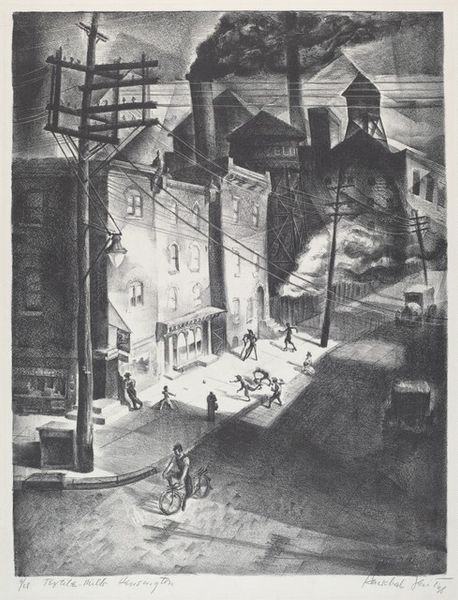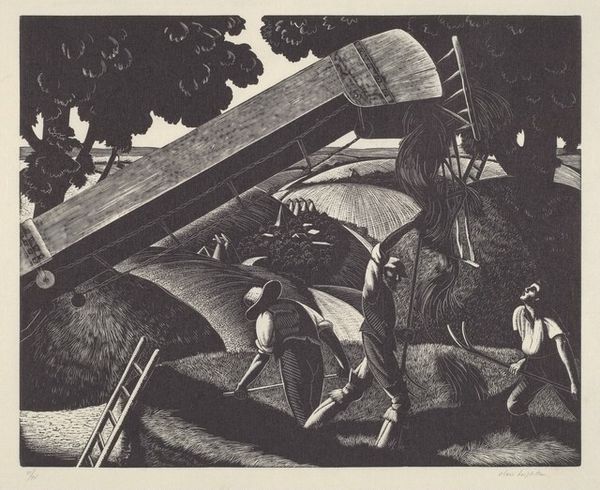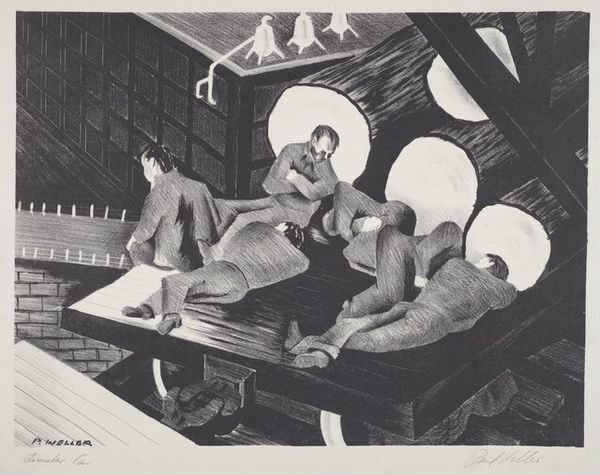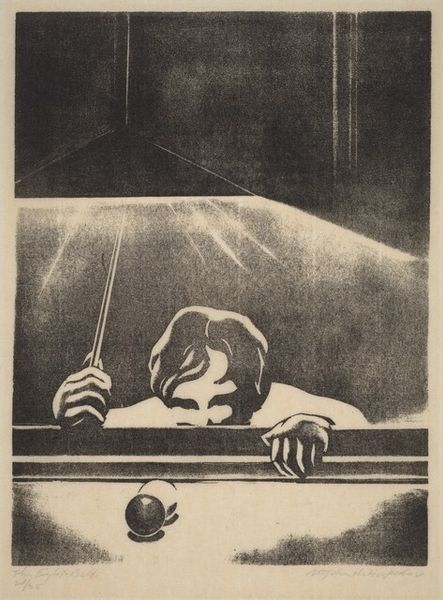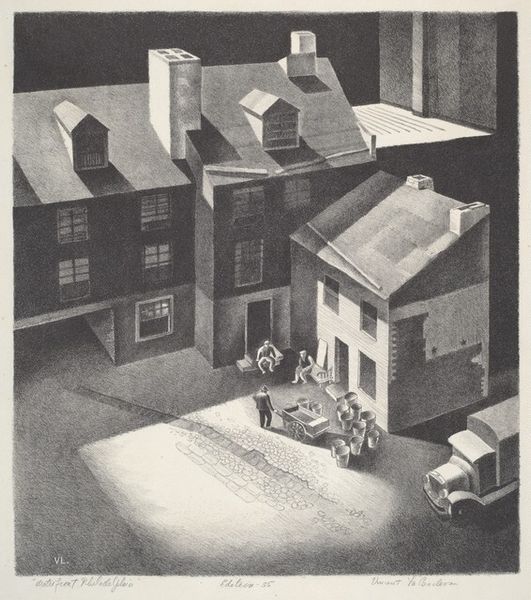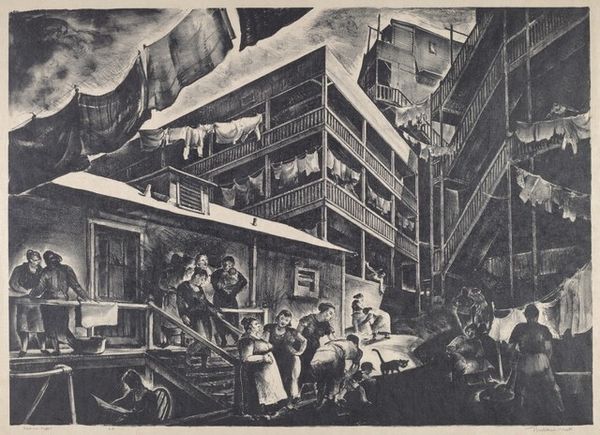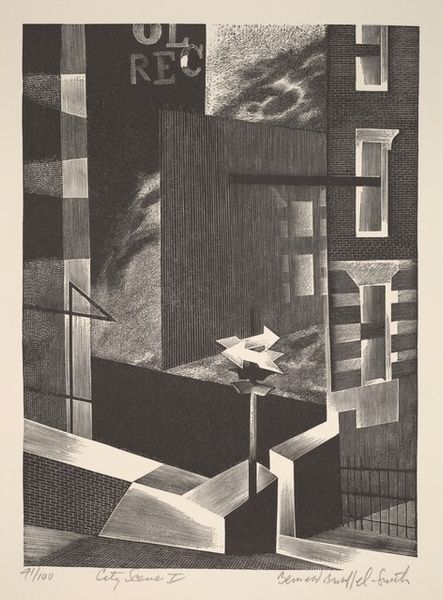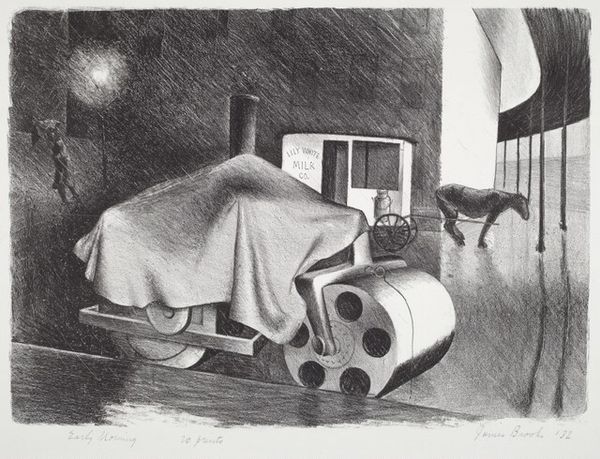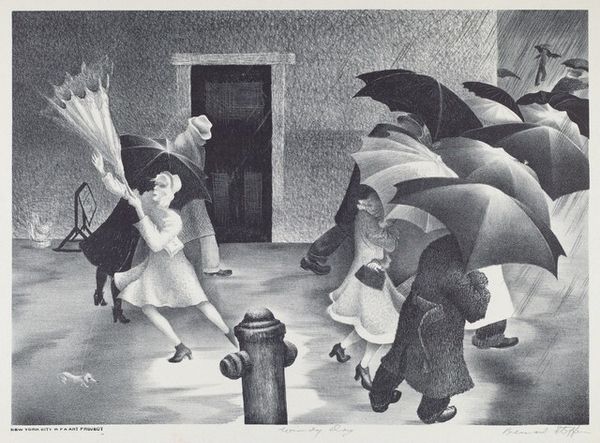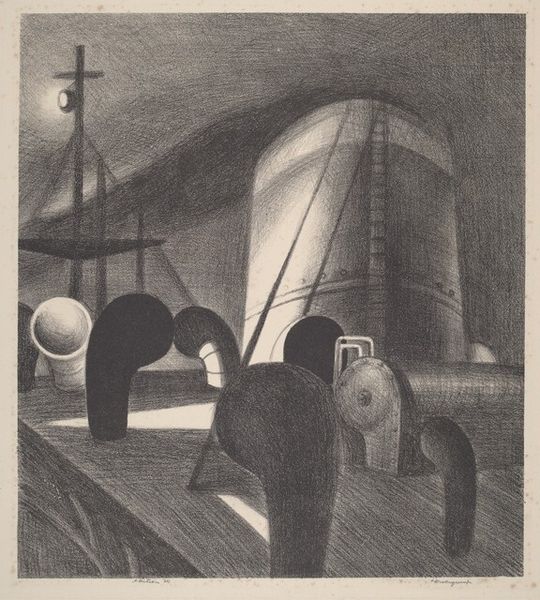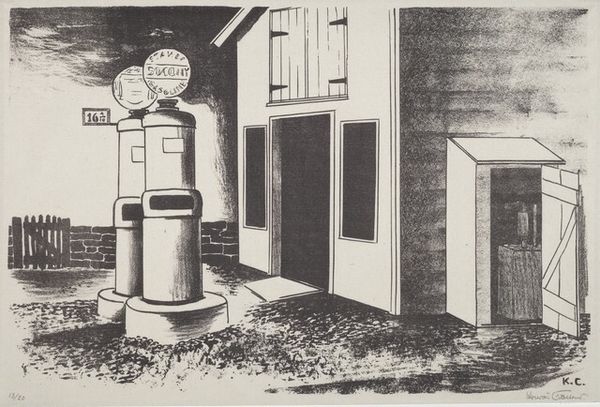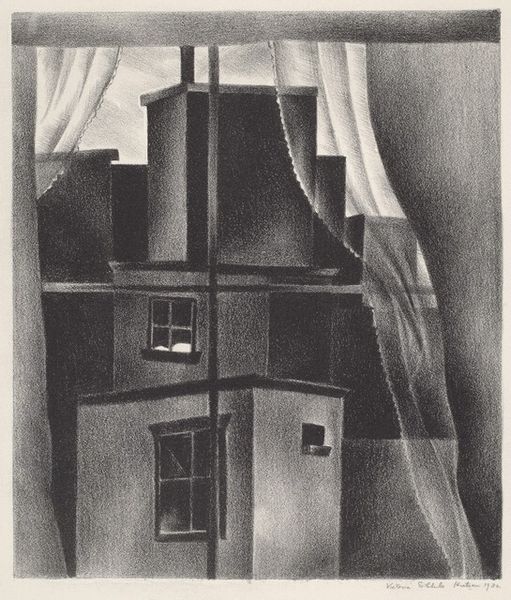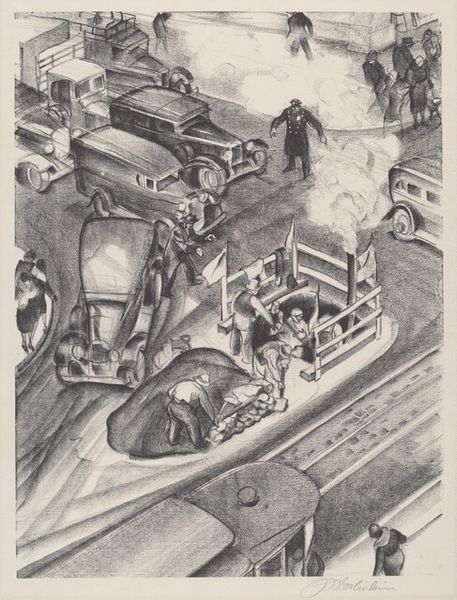
Hand Grinding Castings - Taylor-Wharton Iron and Steel - Est. 1742 1935 - 1938
0:00
0:00
print, graphite
# print
#
surrealism
#
graphite
#
genre-painting
#
graphite
#
realism
Dimensions: image: 353 x 424 mm sheet: 466 x 482 mm
Copyright: National Gallery of Art: CC0 1.0
Curator: Here we have Minnetta Good's print, "Hand Grinding Castings - Taylor-Wharton Iron and Steel - Est. 1742," created between 1935 and 1938. What's your initial take on it? Editor: My first impression? Gritty. It’s all sharp angles and smoky light. It feels almost claustrophobic, as though you're right there in the middle of this industrial space, breathing in the dust and heat. Curator: Absolutely. Good captures that working-class milieu perfectly through a realistic style combined with graphite. Look at how the geometry of the architecture creates this sense of dynamism! The artist contrasts those harsh lines with what appears to be soft shading around the workers. Editor: You're spot on. It's as if those sharp, regimented structures are imposing themselves on the natural curves of the figures. It's an environment that's been built against, perhaps even in defiance of, nature. This really reinforces the thematic elements related to manual labor. It brings to mind how industry and machinery were transforming not only landscapes but human experience as well during that time. Curator: Exactly. There's something about the placement of the figures too. The eye is immediately drawn into their actions with the machinery; almost everything else is out of focus to a degree. But how would you interpret that diffused background? Is it just that; out of focus? Editor: The composition evokes early modernist notions, perhaps like Constructivism and Italian Futurism in their portrayals of modernity and the industrial world. There are near surrealist aspects within those notions though; look how the beams intersect and support impossible objects up in the corners. There is definitely an undercurrent of tension to this, making the laborers all the more at the whims of their conditions. The piece speaks about the individual dwarfed in this industrial scene; each with limited agency, perhaps ground away as much as the materials in front of them. Curator: I never considered a degree of surrealism within it; it certainly enhances how one views this composition! Perhaps on reflection, the workers' activity takes on a cyclical bent. They stand facing heavy machinery as though locked in motion for all time. It makes for an incredible comment on industry in the era, doesn't it? Editor: Indeed. After examining this piece through discussions regarding structure and the workers, it now projects the themes it expresses into the modern age: do those concepts and the conditions still exist? Is there an evolution in it all? Something to ponder after considering the initial gritty emotional response, at the very least.
Comments
No comments
Be the first to comment and join the conversation on the ultimate creative platform.
